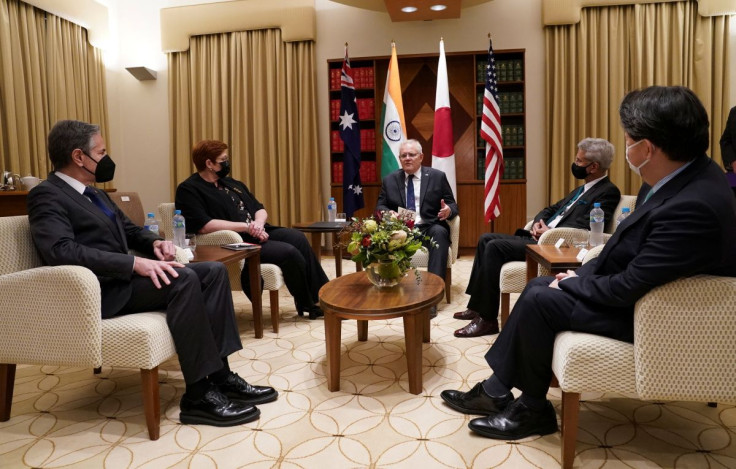Australia Says Plane Had 'Right' To Watch China Navy Vessel In Its Waters

Australian Prime Minister Scott Morrison said an Australian surveillance plane was doing its job when it was "put under threat" with a laser from a Chinese navy ship, rejecting Beijing's assertion that the plane came too close.
The P-8A Poseidon, a maritime patrol aircraft, detected a laser emanating from a People's Liberation Army Navy (PLAN) vessel last Thursday, and Australia released photographs of two Chinese vessels sailing close to its north coast.
On Tuesday, Australia's defence department said the aircraft dropped sonobuoys, which can help detect submarines, after the laser incident, and that the surveillance devices were not a shipping hazard.
"Our surveillance planes have every right to be in our exclusive economic zone and keeping a close eye on what people are up to," Morrison told reporters.
"The fact they were put under threat is extremely disappointing."
In Bejing, when asked about Morrison's comments and if China could confirm that a military-grade laser was used, the foreign ministry said Australia had used reconnaissance planes to take "provocative actions" against China on many occasions.
"We firmly oppose this, and urge the Australian side to reflect on itself, not to spread false information, and not to deliberately create trouble," ministry spokesman Wang Wenbin told a regular briefing.
The Chinese guided missile destroyer and an amphibious transport dock were sailing east through the Arafura Sea between New Guinea and Australia, before passing through the narrow Torres Strait, Australia's defence department says.
Beijing says the Chinese ships had a legal right to be in international waters, which Australia has not disputed.
On Monday, China's defence ministry said the surveillance plane had dropped a sonobuoy near the Chinese ships, and had flown as close as 4 km (2.5 miles) from the convoy, which it called "provocative and dangerous".
Australia's defence department said the aircraft had acted in a safe manner and that the use of sonobuoys for maritime surveillance is common practice.
"No sonobuoys were used prior to the PLA-N vessel directing its laser at the P-8A aircraft on 17 February," it said on Tuesday.
"Some sonobuoys were used after the incident but were dropped in the water a significant distance ahead of the PLA-N vessel."
The devices collect passive acoustic data on ships and submarines, it added.
The aircraft was 7.7 km (4.8 miles) from the Chinese naval vessel at the time of the laser incident, it said, and the closest it flew was 3.9 km (2.4 miles), which Australia said was standard for a visual inspection of a vessel.
"Australia expects all foreign vessels entering its maritime zones to abide by international law, particularly the UNCLOS," it said in the statement, referring to the United Nations Convention of the Law of the Sea.
On Tuesday, Morrison announced separately Australia would spend A$804 million ($578 million) to buy drones and helicopters and set up mobile stations in Antarctica, a region on which it needed to keep watch.
He said China did not share Australia's objectives in Antarctica, 42% of which Australia claims, and that Beijing wanted to exploit its resources.
"We need to keep eyes in Antarctica because there are others who have different objectives to us," he said.
© Copyright Thomson Reuters {{Year}}. All rights reserved.





















